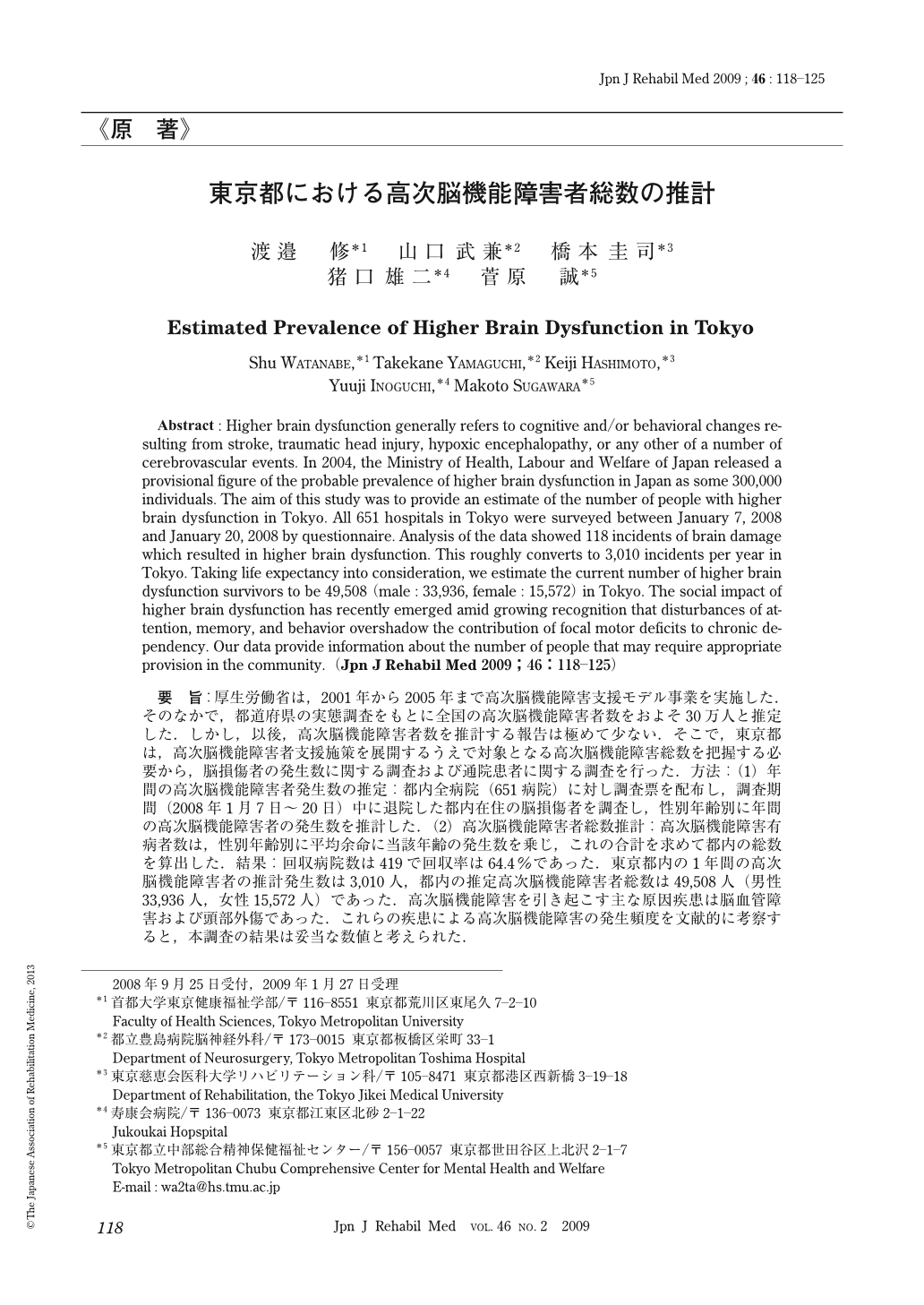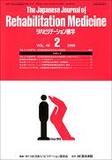Japanese
English
- 販売していません
- Abstract 文献概要
- 1ページ目 Look Inside
- 参考文献 Reference
要旨:厚生労働省は,2001年から2005年まで高次脳機能障害支援モデル事業を実施した.そのなかで,都道府県の実態調査をもとに全国の高次脳機能障害者数をおよそ30万人と推定した.しかし,以後,高次脳機能障害者数を推計する報告は極めて少ない.そこで,東京都は,高次脳機能障害者支援施策を展開するうえで対象となる高次脳機能障害総数を把握する必要から,脳損傷者の発生数に関する調査および通院患者に関する調査を行った.方法:(1)年間の高次脳機能障害者発生数の推定:都内全病院(651病院)に対し調査票を配布し,調査期間(2008年1月7日~20日)中に退院した都内在住の脳損傷者を調査し,性別年齢別に年間の高次脳機能障害者の発生数を推計した.(2)高次脳機能障害者総数推計:高次脳機能障害有病者数は,性別年齢別に平均余命に当該年齢の発生数を乗じ,これの合計を求めて都内の総数を算出した.結果:回収病院数は419で回収率は64.4%であった.東京都内の1年間の高次脳機能障害者の推計発生数は3,010人,都内の推定高次脳機能障害者総数は49,508人(男性33,936人,女性15,572人)であった.高次脳機能障害を引き起こす主な原因疾患は脳血管障害および頭部外傷であった.これらの疾患による高次脳機能障害の発生頻度を文献的に考察すると,本調査の結果は妥当な数値と考えられた.
Abstract : Higher brain dysfunction generally refers to cognitive and/or behavioral changes resulting from stroke, traumatic head injury, hypoxic encephalopathy, or any other of a number of cerebrovascular events. In 2004, the Ministry of Health, Labour and Welfare of Japan released a provisional figure of the probable prevalence of higher brain dysfunction in Japan as some 300,000 individuals. The aim of this study was to provide an estimate of the number of people with higher brain dysfunction in Tokyo. All 651 hospitals in Tokyo were surveyed between January 7, 2008 and January 20, 2008 by questionnaire. Analysis of the data showed 118 incidents of brain damage which resulted in higher brain dysfunction. This roughly converts to 3,010 incidents per year in Tokyo. Taking life expectancy into consideration, we estimate the current number of higher brain dysfunction survivors to be 49,508 (male : 33,936, female : 15,572) in Tokyo. The social impact of higher brain dysfunction has recently emerged amid growing recognition that disturbances of attention, memory, and behavior overshadow the contribution of focal motor deficits to chronic dependency. Our data provide information about the number of people that may require appropriate provision in the community.

Copyright © 2009, The Japanese Association of Rehabilitation Medicine. All rights reserved.


